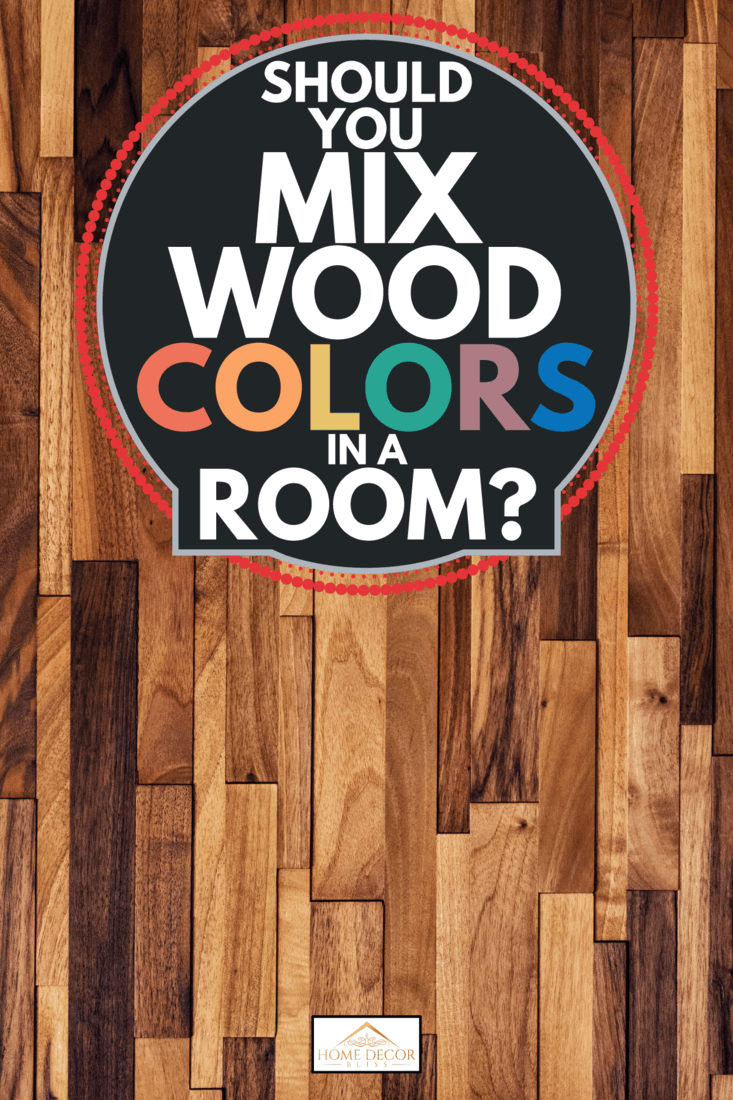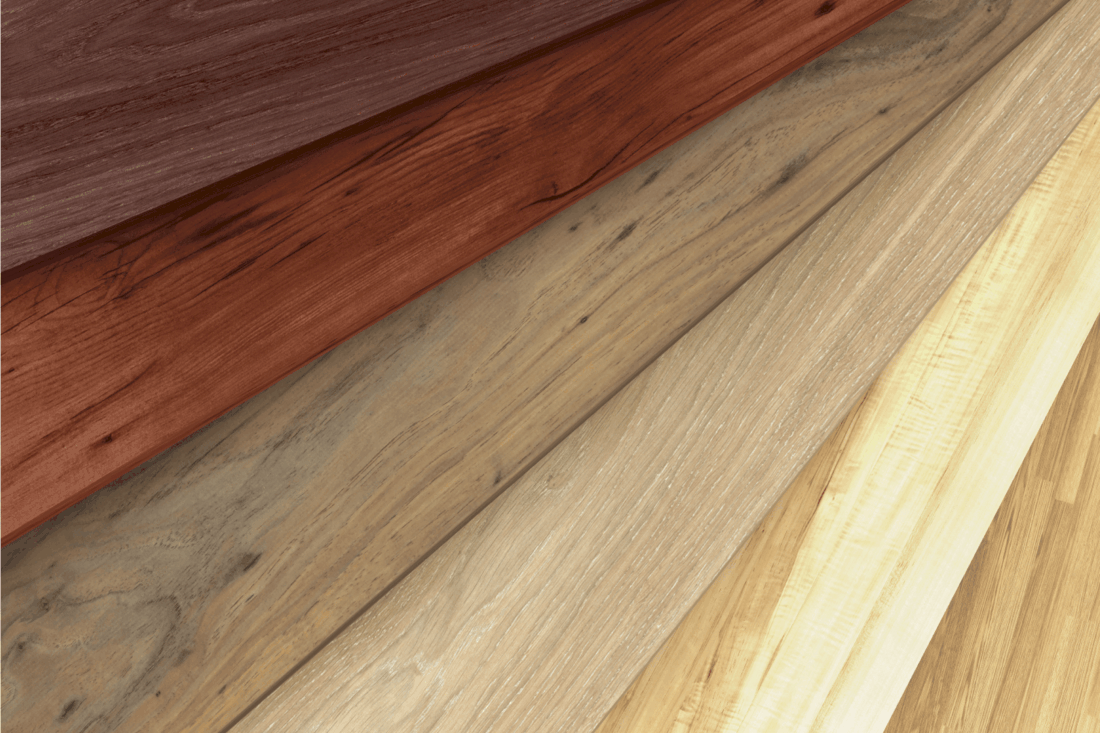In Decorating Living Room How Many Wood Colors Can You Mix
Whether you're completely refurnishing or replacing a broken piece of furniture, you'll likely end up working with wood. Wooden furniture is very popular because it's inexpensive and always in style. But you probably didn't purchase every piece of furniture in the room as a set. This means the wooden furniture won't always have matching colors. For your convenience, we brought you a guide on how to best mix the wood colors in a room.
It is best to mix wood colors in any room. Even with matching sets, redundant colors can sometimes become overwhelming. However, you can successfully blend different wood colors in several ways:
- Select a dominant color
- Use wood tones that naturally agree
- Use a similar wood finish
- Make each wood type consistent in the room
- Use accent pieces to soften the color gradients
You can use wooden furniture for nearly any interior design style. Wood is also available in a wide variety. So, nearly everyone has advice on how to use wood colors. It may seem difficult to pinpoint what you want, let alone how to get there. Keep reading to learn just how to mix wood colors correctly, what wood types match, and how to begin.

Is it ok to mix different wood colors in a room?
Firstly, you need to learn about the benefits of mixing wood colors. Matching one color to another probably seems like a good idea. After all, plenty of furniture is sold as a matching set. But mixing colors is always a good idea, regardless of the material. Although that may seem counterintuitive, there can be too much of a good thing.
This is why you should actually choose complementary colors. This means that the colors will work together, even though they are different. This would include playing around with bold things, like totally contrasting pieces. Most interior designers advise that if your room is basically monochromatic, it can easily become boring.
In fact, if hardwood floors aren't matched quite right, it can result in damage. If you can't tell where the floor, baseboard, and furniture end, someone may end up scraping or scuffing the wood.
So, mixing different wood colors isn't just ok, but traditionally favored. A room with layers will be more attractive, and it can even look professional by following just a few easy and common suggestions.
How do you mix wood colors in a room?
There are many steps you can take to mix wood colors in a room. Fortunately, many of them will work together. This means that there is always a way to dig your way out of a hole if you don't like the current design of your room.
Select a Dominant Color
Choosing a dominant tone is typically the easiest way to begin, particularly if you aren't sure of what you want. If you already have hardwood flooring in your room, this is traditionally the dominant wood color in your room. This means that all of the subsequent furniture should work with the flooring. Since the color gradient in any room should become lighter as your eyes move up the room, your wood colors should be brighter than the floor.
However, even if you elected to purchase a new hardwood floor, it doesn't necessarily have to be your dominant color. You can really make a hardwood floor pop by choosing a contrasting dominant furniture tone. The dominant color can absolutely revolve around a central piece of furniture, which is handy if you already own a set. There are ways of working around a hardwood floor with other unifying methods.
What wood tones go together?
Now you can begin exploring different options to mix your wood colors in an interesting, comfortable way.
Using wood tones that already agree with each other is certainly a simple solution. Some wood tones will naturally work together because they are closer together on the spectrum of warm and cool wood. This means that wood colors with bright overtones will always agree, even though they're different types. For example, cherry and white oak will always agree.
You can also use the same warm and cool scale to select wood types with different undertones. This is the most popular and effective way to blend wood tones. Different species of wood can also have undertones of various colors. Warm undertones include reddish hues or even pink. Cool undertones include undertones like gray or even purple. For example, cherry and mahogany are typically complementary because they both have warm undertones.
How do you mix wood finishes in a room?
Wood finish is meant to seal your wood, which can help resist damage or filth. However, consistently spreading a similar wood finish throughout the room can also help mix your wood colors. Different wood finishes can adjust the color of your wood while maintaining the same grain appearance.
This means that you can apply the same wood finish to different pieces of furniture in your room to create a consistent scene. The colors don't even have to be drastically transformed. The right wood finish can help bring different pieces slightly closer on the warm and cool spectrum. Wood finish can even be used to adjust how glossy your wood appears.

Click here to find this gloss finish for wood on Amazon.
Make Each Wood Consistent
Another common solution for mixing wood colors is to use unique types of wood at least twice. This will create a sense of deliberate decoration in your room. Consistency is always key with interior design. It will create symmetry in the room, and balance is always naturally attractive.
However, you should keep in mind that it's best to avoid using more than two or three different wood types. This is because the room can begin to feel too cluttered. That is particularly true if you're trying to use every wood color at least twice in the room.
Remember that the rule of thirds is a basic staple of artwork and design. It usually involves composition, but it always ensures that your design will be interesting without appearing too messy. This can certainly be applied to your wood colors to tie a room together.
Use Accent Pieces
This can be one of the most effective tools in your arsenal when you need to mix wood colors. Accent pieces are small additions to the room, and they can definitely bridge the gap between furniture pieces that disagree.
One of the most useful accent pieces is a strategically placed rug. With the right design and size, a rug can successfully make different wood colors look both intentional and appealing. You can also use larger rugs to weaken the overwhelming power of a hardwood floor that doesn't agree with your furniture.

Cilck here to see this low-pile, grey tone area rug on Amazon.
Other accent pieces might include curtains that touch the floor. Decorating your wall with the right color can create the perfect backdrop for different wood colors. As long as all of the wood colors complement the new backdrop, they will all become a part of the same canvas of curtains. You can read this post to learn about 15 great living room curtain ideas.

Click here to see these neutral colored curtains on Amazon.
Small standalone furniture pieces can also bridge the gap between two wood colors that are too far apart on the warmth spectrum. It will make the gradient transition more gradual between two conflicting wood colors.

Can you mix oak and walnut furniture?
Oak and walnut can easily be mixed. This is because both of these wood types can often be adjusted to work with either cool or warm tones. In fact, walnut is often considered to be the most versatile wood on the market.
Even though walnut is usually described as having purple undertones, walnut's particular shade can often work in many circumstances. With the right finish, walnut furniture becomes even more open to complementary neighbors. You can check out this post about 23 different types of wood for furniture.
Can you mix dark wood and white furniture?
Technically, you are always manipulating contrast when you mix wood colors. But there is no greater contrast than blending dark colors with white furniture.
Fortunately, high contrast actually looks nicer than pairing pieces that are almost complementary. It is far more distracting when two pieces are barely failing to agree. Instead, committing to a full contrast can allow certain elements of the room to pop.
Like wood itself, white themes are used for many interior designs. This is because the color white can brighten up a room without commanding your full attention. Since the furniture in question is white, it can serve as a neutral canvas for pretty much any style. This means you can direct the focus of your room anywhere you like.
Darker wood will stand out against white furniture and vice versa. This is a bold choice and useful for something like an abstract style. Meanwhile, lighter wood will create a brighter scene, as in a coastal style.
In closing
Learning to mix wood colors properly is always worthwhile. There are so many methods of mixing colors; the best way to begin mixing wood tones is to learn how they work together. Now that you know the best wood color relationships and mixing techniques, you can focus on what you actually want!
In Decorating Living Room How Many Wood Colors Can You Mix
Source: https://homedecorbliss.com/should-you-mix-wood-colors-in-a-room/
Posted by: rogersocke2001.blogspot.com

0 Response to "In Decorating Living Room How Many Wood Colors Can You Mix"
Post a Comment